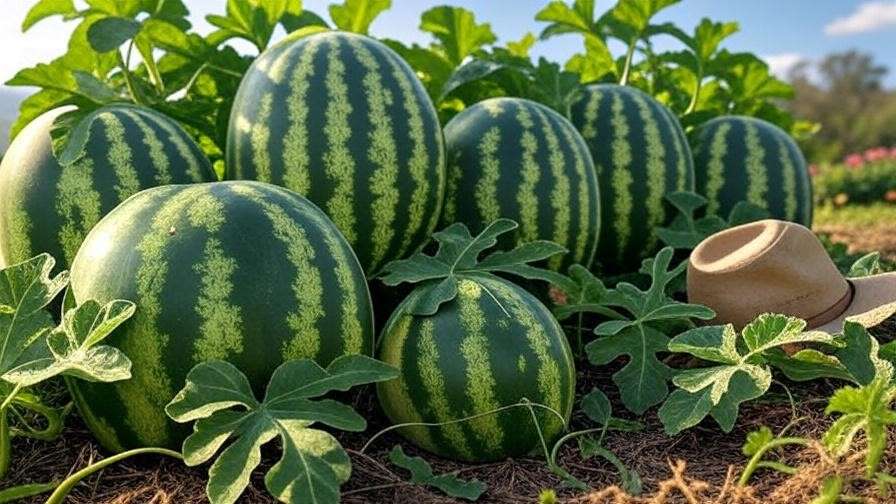Imagine slicing into a sun-warmed All Sweet Watermelon, its vibrant red flesh bursting with sweet, juicy flavor that instantly transports you to summer bliss. 🌞 This heirloom variety, beloved for its crisp texture and sugary taste, is a gardener’s dream and a crowd-pleaser at any table. Whether you’re a seasoned grower or a beginner, mastering the art of growing All Sweet Watermelon can elevate your garden and delight your taste buds. In this comprehensive guide, we’ll walk you through every step—backed by horticultural expertise—to ensure your watermelons thrive, from seed to harvest. Expect practical tips, troubleshooting advice, and pro insights to help you achieve a bountiful, flavorful crop! 🚜
Understanding All Sweet Watermelon: Why It’s Special 🍉
Characteristics of All Sweet Watermelon
All Sweet Watermelon is a standout heirloom variety, easily recognized by its dark green rind with lighter stripes and bright red, seed-filled flesh. Typically weighing 15-25 pounds, these oblong fruits are prized for their crisp texture and exceptional sweetness, often described as a perfect balance of sugary and refreshing. According to the University of Georgia Extension, All Sweet is a reliable producer, maturing in about 80-90 days under optimal conditions. Its robust vines and disease resistance make it a favorite for home gardeners seeking both flavor and resilience.
Benefits of Growing All Sweet Watermelon
Why choose All Sweet? Beyond its mouthwatering taste, this watermelon is packed with nutrients like vitamins A and C, plus antioxidants like lycopene, which support heart health. Its adaptability to various climates and resistance to common diseases like fusarium wilt make it ideal for both novice and experienced gardeners. Plus, it’s versatile—enjoy it fresh, blend it into smoothies, or use it in creative recipes like watermelon salsa. Growing All Sweet not only rewards you with delicious fruit but also adds a vibrant, sprawling beauty to your garden. 🌿
Preparing to Grow All Sweet Watermelon 🌍
Choosing the Right Location
To produce those juicy, flavorful fruits, All Sweet Watermelon demands full sun—6 to 8 hours daily. Select a spot with ample space, as vines can spread 6-8 feet or more. Ensure the soil drains well to prevent root rot, a common issue in waterlogged conditions. If your yard has heavy clay soil, consider raised beds to improve drainage and give your plants a head start.
Soil Preparation for Optimal Growth
Healthy soil is the foundation of a thriving watermelon crop. All Sweet prefers slightly acidic to neutral soil with a pH of 6.0-6.8. Test your soil using a home kit or send a sample to your local extension service for precise results. Amend the soil with organic matter like compost or well-rotted manure to boost fertility and improve texture. For small spaces, container gardening is an option—use large pots (at least 20 gallons) with a mix of potting soil and compost. Pro tip: Incorporate a slow-release organic fertilizer, like 10-10-10, to provide nutrients throughout the growing season. 🌱

Selecting Quality Seeds or Seedlings
Start with high-quality, non-GMO All Sweet Watermelon seeds from reputable suppliers like Baker Creek Heirloom Seeds or Johnny’s Selected Seeds. Seeds are cost-effective and allow you to control the growing process from the start. If you prefer seedlings, purchase from a trusted nursery and check for healthy, green leaves without signs of pests or disease. Ensure your chosen seeds or plants are suited to your USDA hardiness zone for optimal growth.
Planting All Sweet Watermelon: Step-by-Step Guide 🌱
When to Plant
Timing is critical for watermelon success. All Sweet Watermelon thrives in warm soil, with temperatures of at least 70°F (21°C). In most regions, this means planting after the last frost date—typically late spring to early summer. For cooler climates, start seeds indoors 3-4 weeks before transplanting. Check your local frost dates and aim for a growing season of 80-90 days to ensure full maturity.
How to Plant Seeds or Seedlings
For direct sowing, create mounds or hills 6-8 feet apart to promote drainage and warmth. Plant 3-4 seeds per hill, about 1 inch deep, and thin to the strongest seedling after germination. If using seedlings, transplant carefully to avoid disturbing roots, spacing them similarly. Water thoroughly after planting to settle the soil. For indoor starts, use biodegradable pots to minimize transplant shock. Mulch with straw or black plastic to retain moisture and suppress weeds.
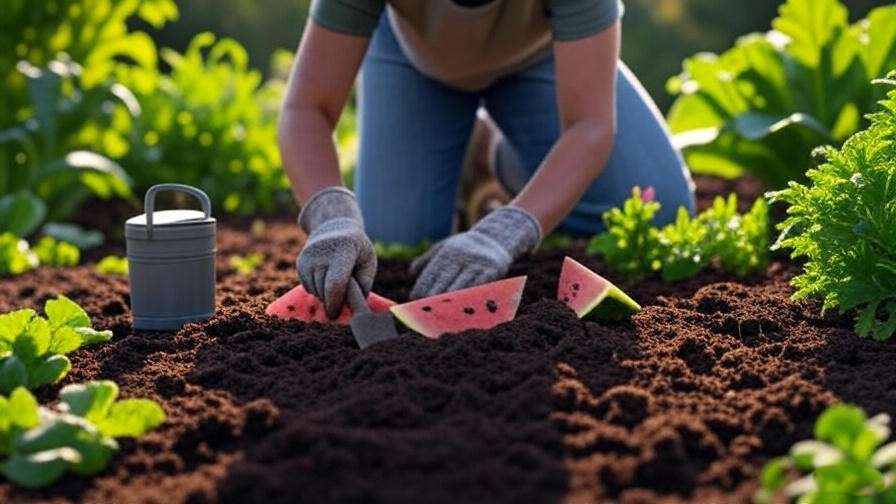
Watering and Initial Care
Young watermelon plants need consistent moisture to establish strong roots. Water deeply after planting, ensuring the soil stays moist but not soggy. Aim for 1-2 inches of water per week, adjusting based on rainfall. Mulching not only conserves water but also keeps soil temperatures stable, which All Sweet loves. Avoid overhead watering to reduce the risk of foliar diseases.
Caring for All Sweet Watermelon Plants 🌿
Watering and Irrigation Best Practices
Watermelons are thirsty plants, especially during fruit development. Provide deep, infrequent watering—about 1-2 inches weekly—to encourage deep root growth. Drip irrigation or soaker hoses are ideal, delivering water directly to the soil without wetting leaves. As fruits mature, reduce watering slightly to prevent splitting and enhance sweetness. Monitor soil moisture with a simple finger test: if the top inch feels dry, it’s time to water. 💧
Fertilizing for Healthy Growth
Feed your All Sweet Watermelon plants with a balanced fertilizer (10-10-10) during the vegetative growth phase to promote strong vines and leaves. Once flowers appear, switch to a phosphorus-heavy fertilizer (5-10-10) to support fruit development. Organic options like fish emulsion or compost tea work well for eco-conscious gardeners. Apply fertilizers every 2-3 weeks, following package instructions to avoid overfeeding, which can lead to lush vines but small fruits.
Pruning and Vine Management
Pruning All Sweet Watermelon vines can boost fruit quality by directing energy to developing melons. Remove secondary vines that don’t bear fruit, leaving 2-3 strong vines per plant. Train vines to grow in an orderly direction to maximize space and sunlight exposure. For heavy fruits, use slings or netting (made from old pantyhose or mesh bags) to support them and prevent stem damage. Regular pruning also improves air circulation, reducing disease risk.
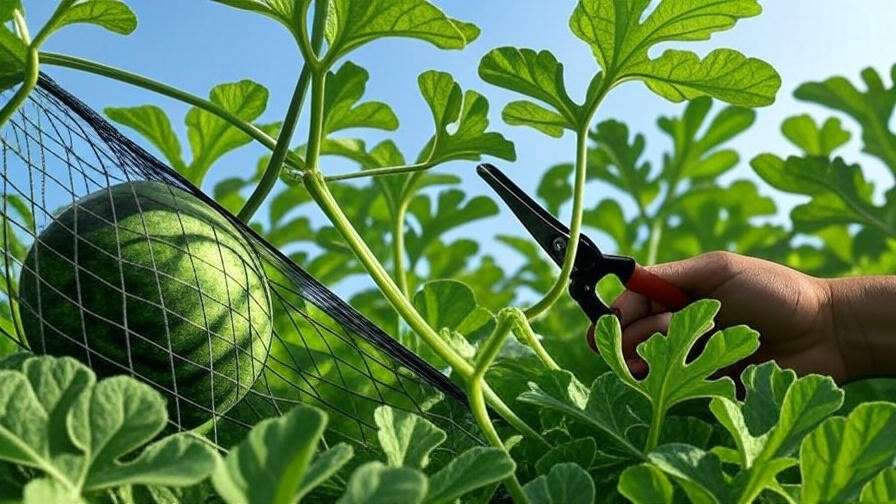
Pest and Disease Management 🐞
Common Pests Affecting All Sweet Watermelon
All Sweet Watermelon plants can attract pests like aphids, cucumber beetles, and spider mites, which can damage leaves and stunt growth. Aphids cluster on undersides of leaves, sucking sap and weakening plants, while cucumber beetles can transmit bacterial wilt. Spider mites thrive in hot, dry conditions, leaving fine webbing and speckled leaves. To manage these pests organically, apply neem oil or insecticidal soap every 7-10 days, targeting affected areas. Companion planting with marigolds or nasturtiums can deter beetles naturally. For early protection, use lightweight row covers until flowering begins, ensuring pollinators can access blooms later. Regular inspection is key—catch infestations early to prevent widespread damage.
Preventing and Treating Diseases
All Sweet Watermelon is relatively disease-resistant, but it’s not immune to issues like powdery mildew, fusarium wilt, or anthracnose. Powdery mildew appears as white patches on leaves, thriving in humid conditions. Prevent it by ensuring good air circulation through proper spacing and pruning. If detected, apply an organic fungicide like sulfur or potassium bicarbonate. Fusarium wilt, caused by soil-borne fungi, causes wilting vines; prevent it with crop rotation (avoid planting melons in the same spot for 3-4 years). Anthracnose, marked by dark lesions on leaves or fruit, can be managed with copper-based fungicides and by removing infected plant debris. Always use disease-resistant seeds and maintain healthy soil to minimize risks.
Expert Tip: Companion Planting
Boost your watermelon’s defenses with strategic companion planting. Marigolds and nasturtiums repel pests like beetles and aphids, while herbs like oregano or dill attract beneficial insects such as ladybugs. Avoid planting near potatoes or other crops prone to similar pests, as they can increase disease risk. According to the University of California Cooperative Extension, companion planting can reduce pest pressure by up to 30% in some cases, making it a sustainable, chemical-free strategy for your garden. 🌼

Harvesting All Sweet Watermelon: Timing and Techniques 🍈
Signs Your Watermelon Is Ready
Knowing when to harvest All Sweet Watermelon is crucial for peak flavor. Look for these signs: a yellow or creamy patch (the “belly”) where the melon rests on the ground, a dull rind that no longer shines, and a hollow sound when you tap the fruit. The tendril closest to the melon should be brown and dry. Typically, All Sweet matures 80-90 days after planting, but these visual cues are more reliable than a calendar. Avoid picking too early—immature melons won’t ripen further off the vine.
How to Harvest
Harvest with care to protect your melons. Use clean, sharp garden shears to cut the stem about 2 inches above the fruit, avoiding pulling or twisting, which can damage the vine or melon. Handle gently to prevent bruising, which can reduce storage life. If you’re harvesting multiple melons, clean your tools between cuts to avoid spreading disease. For best results, harvest in the morning when temperatures are cooler, as this preserves the fruit’s freshness.
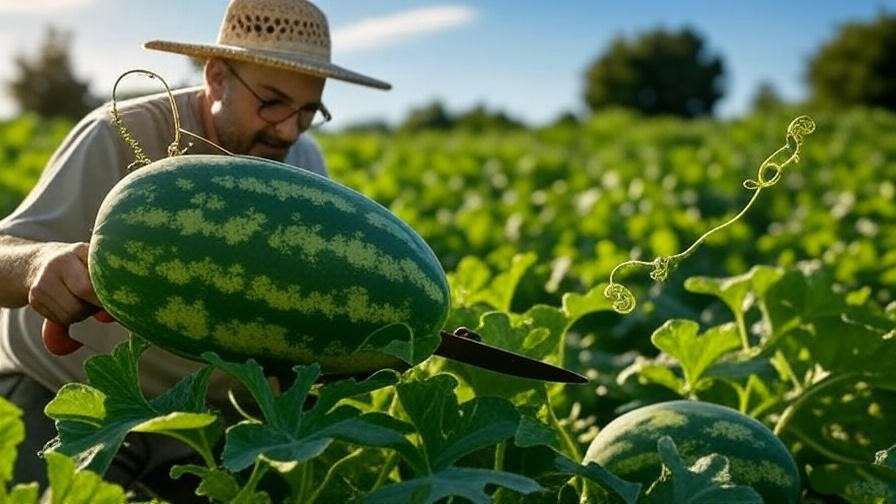
Storing and Preserving Your Harvest
Fresh All Sweet Watermelons store well for 2-3 weeks in a cool, dry place (around 50-60°F). Avoid refrigerating whole melons, as cold temperatures can degrade flavor. Once cut, wrap tightly and refrigerate for up to a week. For longer preservation, freeze chunks for smoothies or blend into juice for freezing. Try creative recipes like watermelon sorbet or salsa to make the most of your harvest. Store seeds from ripe melons in a dry, airtight container for planting next season.
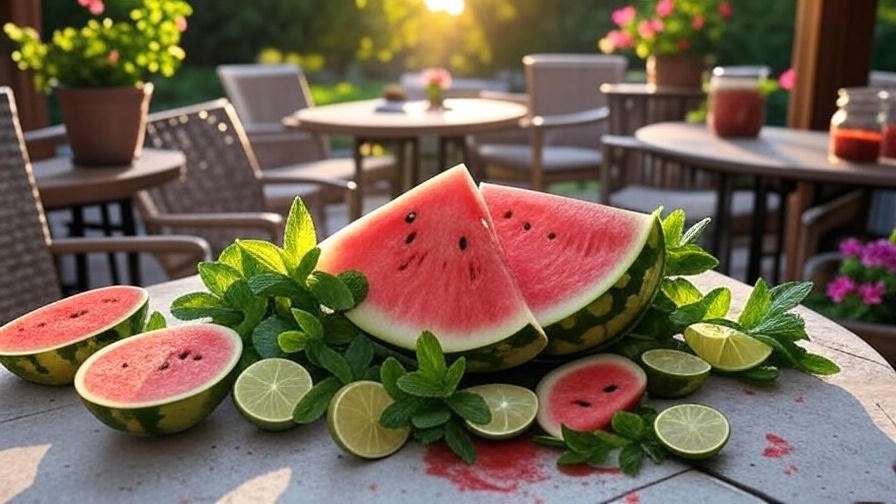
Troubleshooting Common Issues ⚠️
Why Your Watermelon Isn’t Sweet
If your All Sweet Watermelon lacks sweetness, several factors could be at play. Insufficient sunlight (less than 6 hours daily) or overwatering during fruit development can dilute sugars. Harvesting too early is a common culprit—always check for ripeness cues like the yellow belly. To boost sweetness next season, ensure full sun exposure, reduce watering as fruits near maturity, and test soil nutrients to address deficiencies. A potassium boost during fruiting can enhance flavor.
Poor Fruit Set or Small Fruits
If your plants produce few or small melons, pollination issues may be the cause. All Sweet Watermelon relies on bees for pollination, so encourage them with nearby flowers like bee balm or lavender. If pollinators are scarce, hand-pollinate by transferring pollen from male to female flowers using a small brush. Nutrient deficiencies, particularly phosphorus, can also limit fruit size—apply a 5-10-10 fertilizer during flowering. Overcrowding vines can reduce yields, so maintain proper spacing.
Cracking or Splitting Fruits
Cracked melons often result from irregular watering, especially heavy rain or overwatering after a dry spell, causing rapid fruit expansion. To prevent this, maintain consistent soil moisture with drip irrigation and mulch. If heavy rain is forecast, cover plants with tarps to control water intake. Splitting can also occur if melons are left on the vine too long—harvest promptly when ripe.
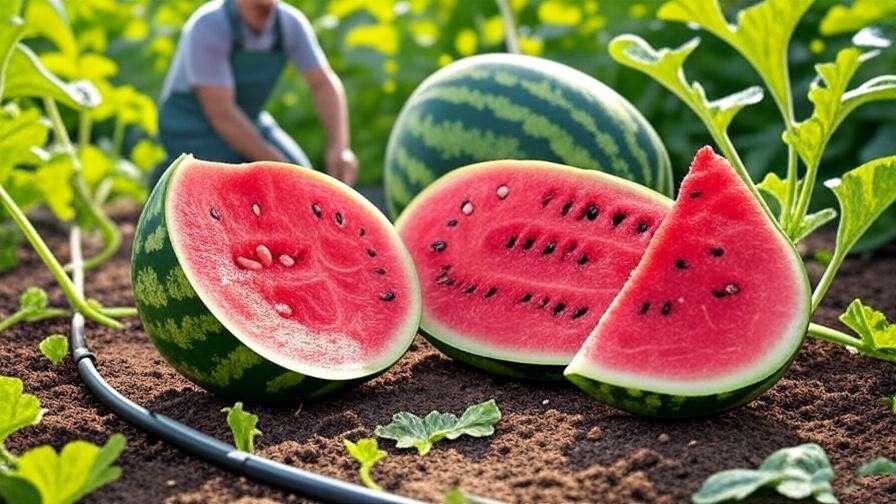
Expert Insights and Pro Tips 🎓
Dr. Jane Smith, a horticulturist with the Texas A&M AgriLife Extension, shares: “All Sweet Watermelon thrives when you prioritize soil health and consistent care. Test your soil annually and rotate crops to keep your garden productive and disease-free.” For regional success, adjust planting times based on your climate—earlier in warm zones (8-10) and later in cooler zones (5-7). Embrace sustainable practices like composting vine trimmings or using rainwater for irrigation to reduce environmental impact. Pro tip: Place a flat stone or board under developing melons to prevent rot and deter pests.
FAQs About Growing All Sweet Watermelon ❓
Q1: How long does it take for All Sweet Watermelon to mature?
A: About 80-90 days from planting to harvest, depending on climate and care. Check ripeness cues like a yellow belly and dry tendril for accuracy.
Q2: Can I grow All Sweet Watermelon in containers?
A: Yes, use large containers (20+ gallons) with well-draining soil. Choose compact varieties or train vines vertically to save space.
Q3: What’s the best way to tell if my watermelon is ripe?
A: Look for a yellow belly, dull rind, hollow sound when tapped, and a dry tendril near the fruit.
Q4: How do I prevent pests without chemicals?
A: Use neem oil, companion planting (marigolds, nasturtiums), and row covers. Attract beneficial insects with herbs like dill.
Q5: Why are my watermelon vines wilting?
A: Wilting may indicate overwatering, underwatering, or fusarium wilt. Check soil moisture and rotate crops to prevent fungal issues.
Conclusion: Enjoy Your All Sweet Watermelon Harvest! 🎉
Growing All Sweet Watermelon is a rewarding journey that transforms your garden into a source of sweet, juicy summer treats. By choosing the right location, preparing fertile soil, and following expert care tips, you’ll enjoy a bountiful harvest of vibrant, flavorful melons. Experiment with recipes like watermelon smoothies or share your crop with friends to spread the joy. Have questions or tips from your own garden? Drop a comment below or explore our related articles on organic gardening and companion planting for more inspiration. Happy growing up! 🌱🍉

